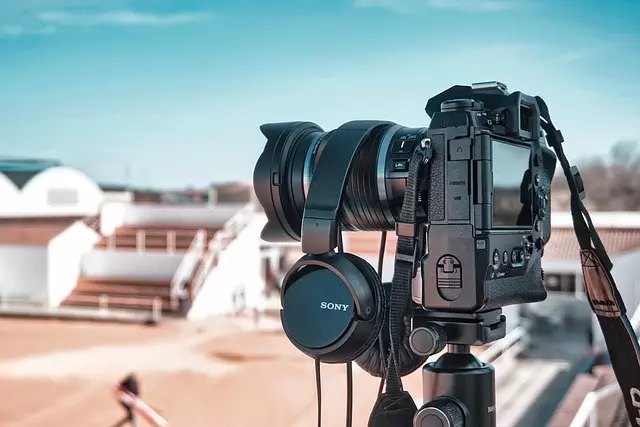TL;DR:
The once-popular DivX video compression format faces historical limitations like complex structure, high compression rates impacting quality, and lack of native support on modern devices. To ensure seamless playback and compatibility with contemporary systems, converting DivX to universal formats like MP4 is crucial. This process addresses compatibility issues, enhances visual experience, and preserves access to older content in a widely supported format, facilitated by online tools or specialized software. Learn how to convert DivX to meet the demands of today's digital landscape.
Introduction:
DivX, once a pioneer in video compression, now poses compatibility challenges with modern devices and media players due to its age. This article guides you through the process of converting DivX files to ensure they remain accessible on newer systems. We’ll explore the need for compatibility, dissect the limitations of DivX format, and provide a comprehensive guide using various tools and software. By the end, you’ll be equipped with the knowledge to seamlessly transition your old DivX videos while enjoying unparalleled flexibility and compatibility.
Understanding DivX Format and Its Limitations

The DivX format, once a popular choice for video compression, has evolved over time, offering improved capabilities and addressing initial limitations. However, it’s essential to understand these constraints before delving into how to convert DivX files effectively. One of the key challenges with DivX was its complex structure, which made direct playback support limited, especially on older devices or media players that didn’t have dedicated Decoders.
This format aimed for high compression rates, resulting in smaller file sizes at the cost of visual quality. The limitations often included reduced clarity, especially in fast-moving scenes, and potential issues with color accuracy and detail preservation. To overcome these, users would need to employ specific tools designed for DivX conversion, ensuring compatibility and optimal playback across a wide range of devices. How to convert DivX effectively involves selecting the right software that understands and overcomes these historical constraints, providing a seamless viewing experience regardless of the original file’s complexity.
– Brief overview of DivX as an old video compression format.

DivX, once a pioneering video compression format, has since been superseded by newer technologies like H.264 and HEVC (H.265). Introduced in the early 2000s, DivX offered significant improvements in video quality while reducing file sizes, making it popular for sharing videos online and burning DVDs. However, with advancements in streaming and media technology, its popularity has waned.
Despite its age, many older videos and films are still available in DivX format, making it relevant for those looking to convert and preserve their digital media collections. Converting DivX files to more modern formats like MP4 can offer improved compatibility with contemporary devices and platforms. This process is essential for users who want to access their content seamlessly across multiple devices without encountering playback issues related to outdated container formats.
– Highlighting the constraints and incompatibilities of DivX files with modern systems.

DivX, a video codec known for its high compression rates and excellent video quality, was once ubiquitous in the early 2000s. However, it has since fallen out of favor due to several constraints and incompatibilities with modern systems. One significant issue is that DivX is no longer actively developed, meaning there are no official updates or bug fixes, which can lead to compatibility problems with newer operating systems and media players.
Furthermore, the lack of widespread support from content creators and streaming platforms has made it increasingly difficult to find new content in DivX format. As a result, many users who rely on older DivX files face challenges when attempting to play them on modern devices or software. To overcome these hurdles, it’s essential to consider how to convert DivX files into more compatible formats like MP4, which is widely supported across various platforms and devices.
The Need for Compatibility: Why Convert DivX?

In the digital age, where multimedia content is abundant and diverse, ensuring compatibility between different formats becomes crucial. This is especially true for older video formats like DivX, which was once a popular choice for video compression but has since been superseded by newer standards. The need to convert DivX arises from several factors. Firstly, many modern devices and media players are incapable of natively supporting DivX, rendering it incompatible with contemporary platforms. Secondly, the advancements in video technology have led to improved compression methods that offer better quality with smaller file sizes, making DivX less competitive.
Converting DivX to more compatible formats is a straightforward process, often facilitated by readily available online tools or software applications. This allows users to share and play their DivX videos seamlessly across various devices, from smartphones and tablets to smart TVs and gaming consoles. By converting DivX, content creators and consumers can take advantage of the flexibility and compatibility that newer formats offer, ensuring a better overall media experience without the constraints of outdated video standards.
In conclusion, the DivX format, though once prevalent, poses challenges in today’s digital landscape due to its incompatibilities with modern systems. To ensure wider accessibility and flexibility, converting DivX files is an essential step. By utilizing modern video formats and codecs, you can unlock unparalleled compatibility, making your videos readily available on various devices and platforms without the limitations of older formats. Thus, embracing conversion methods like those discussed in this article becomes crucial for preserving and sharing multimedia content seamlessly.
